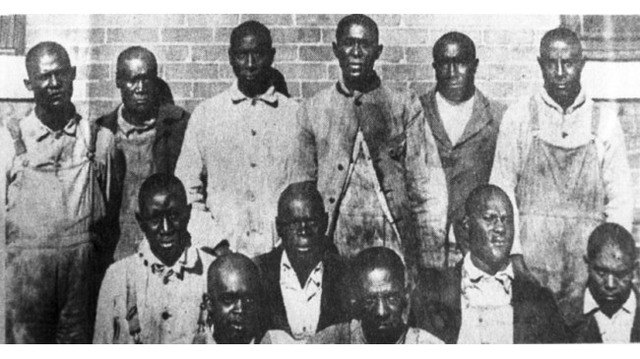Historical conference detailing Elaine massacre to be held in Phillips County
by August 5, 2019 2:01 pm 2,208 views

Poor, black sharecroppers in Phillips County had tolerated low wages and terrible work conditions since the end of the Civil War, but after World War I ended they’d had enough. Tensions between blacks and whites simmered throughout the country during the summer in 1919.
The disgruntled sharecroppers met late night Sept. 30, 1919 in a church in the small town of Elaine. A group of white men, aware of the meeting went to the church. Gunshots were exchanged and a white law officer was killed. What ensued – the Elaine Massacre – is considered by some historians to be the worst racial clash in U.S. history that left five whites dead and potentially hundreds of blacks.
A conference outlining what happened during the riot will be held Saturday (Aug. 10) at the Elaine Legacy Center in Elaine. Paul Ortiz, Director of the Samuel Proctor Oral History program and the University of Florida will give a presentation along with Zoharah Simmons, a community organizer and professor of African American studies.
Dr. Michael Brandon, American studies instructor at North Carolina School of Science and Mathematics, the first STEM focused public residential high school in the country, is slated to speak as well. Students from the University of Florida will be collecting oral histories from family members related to massacre victims. The conference is free and starts at 8:30 a.m.
Details of how the massacre unfolded are scant at best, Arkansas History Commission Chairman Jason Hendren previously told Talk Business & Politics. The story was poorly recorded at the time, and as time passed, a lot of the facts have been lost as people involved died and moved away.
“The actual facts remain murky,” he said.
The summer leading up to the clash between blacks and whites in Phillips County was intense around the country. Race riots broke out in cities and towns nationwide. There were riots between blacks and whites in Chicago and Washington D.C., but the biggest was perhaps in Elaine.
After the firefight at the church, the white armed mob invaded Elaine. Whites from as far away as Mississippi and Tennessee joined. Unarmed black men, women and children were shot down in the streets. Rumors spread that the black community planned a “take over” and it further fueled white fears. A PBS documentary about the event described the fight in Elaine as a literal war between the races. Some blacks armed themselves and tried to fight back, according to the Encyclopedia of Arkansas. Those who fought back were targeted.
As the slaughter unfolded, government officials scrambled to act. Hundreds of soldiers were sent from Camp Pike (near Little Rock) to stop the mob. Soldiers disbursed the mob, and rounded up hundreds of blacks, according to BlackPast.org. There were reports of torture. Many were only released after their white employers asked for them to be released.
Before the episode ended, 122 blacks were charged with crimes, and 12 were charged and convicted of capital murder. The murder convictions were eventually overturned after the men spent years in prison. Not a single white person was charged with a crime.
Many would not talk about the four-day killing spree, Hendren said. There are reports that bodies were dumped into the Mississippi River, and some were left in fields to rot, but it’s hard to verify because no one spoke out at the time. Neither community, white or black, wanted to revisit it for several years, and it was largely forgotten, he said. No one knows the number killed, but it is significantly more than the confirmed deaths, he said.
Estimates of the number killed range from 20 to 800 but no one knows for sure, according to historians. A memorial is slated to be finished in Helena one day before the 100 year anniversary of the riot.
